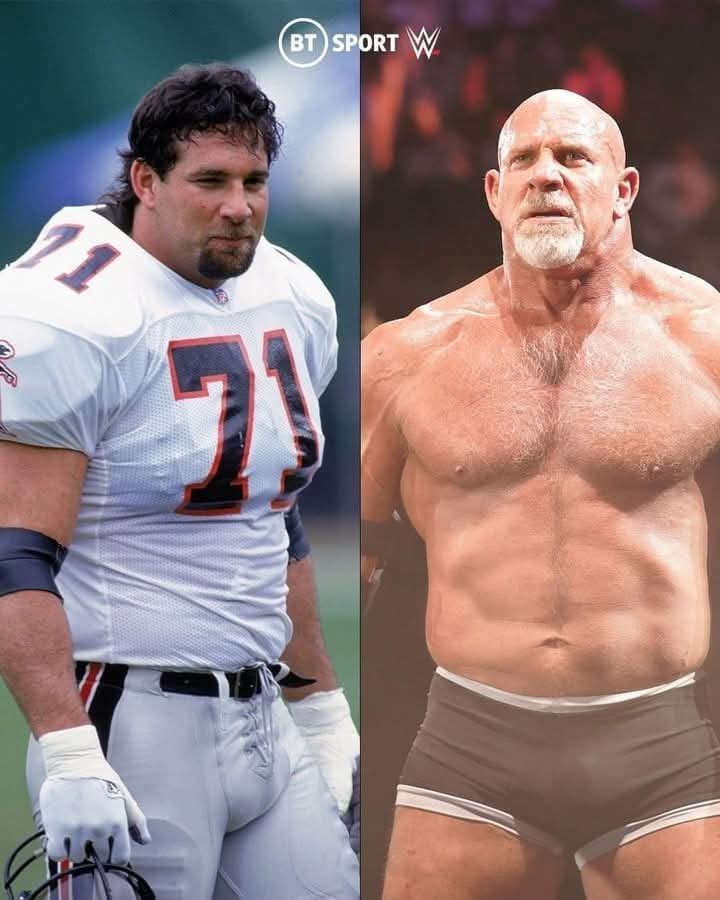Bill Goldberg, known simply as Goldberg in the wrestling world, is a legendary figure in professional wrestling and American football. His transformation over the years—from a fierce NFL player to a wrestling icon and eventually a mainstream media personality—is a striking example of athletic evolution, both physically and professionally.
Before: The Rise of a Beast
Before he became a wrestling icon, Goldberg was a professional football player. He played in the NFL as a defensive tackle for teams like the Los Angeles Rams and the Atlanta Falcons in the early 1990s. At that time, Goldberg’s physique was built for the gridiron—thick, powerful, and functional for brute force rather than showmanship. He was muscular but not yet the chiseled force he would become in the wrestling ring.
His wrestling debut in WCW in 1997 marked a significant transformation. Early in his wrestling career, Goldberg stood out with his bald head, goatee, and intense stare. He had an undefeated streak of 173–0 (kayfabe) in WCW, and fans were captivated by his explosive power and short, dominant matches. His persona was raw and intense, and he built a reputation as a monster in the ring, modeled somewhat after Mike Tyson’s aura of intimidation.
After: The Icon Returns
Years after leaving full-time wrestling in the early 2000s, Goldberg made several comebacks—most notably in WWE from 2016 onwards. His return showed a different man: older, wiser, but still physically intimidating. At over 50, Goldberg maintained an incredibly fit physique, albeit more lean and aged. He remained muscular, though not quite as explosively jacked as in his prime.
What changed most wasn’t just his look—it was his approach. Goldberg was now a father, and his storylines often incorporated his son, adding a human side to the once-silent powerhouse. He transitioned from the silent destroyer to a legend representing grit, legacy, and respect.
Despite age and injuries, Goldberg continued to wrestle part-time, participating in marquee matches against stars like Brock Lesnar, Roman Reigns, and Bobby Lashley. While some fans criticized his limited in-ring ability due to age, others respected his commitment and presence.
Conclusion
Goldberg’s “before vs after” journey is about more than muscles or matches—it’s about evolving through eras. From a fearsome, undefeated wrecking machine to a revered veteran and father figure, Goldberg represents what it means to adapt, endure, and still deliver sparks of great
ness decades later.


